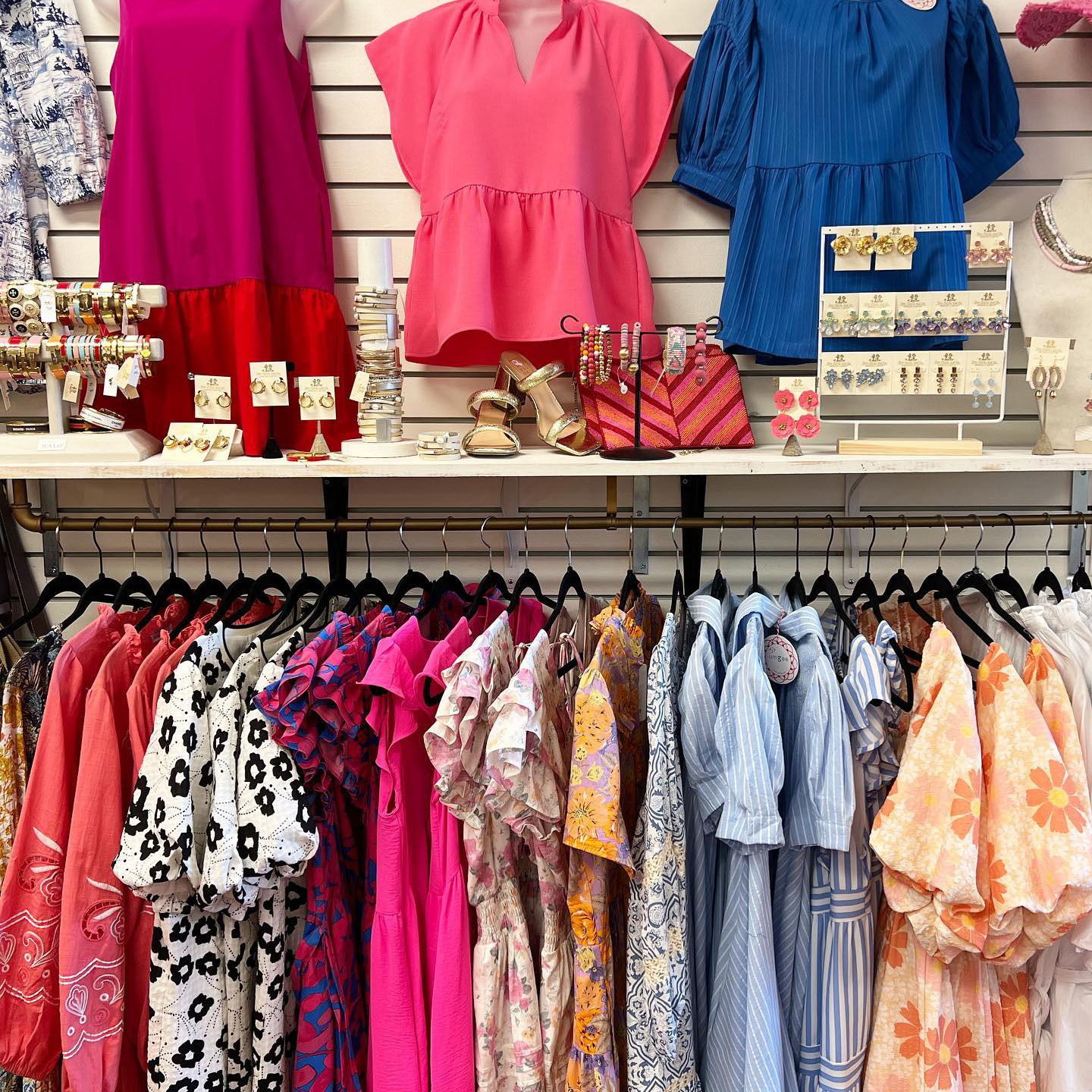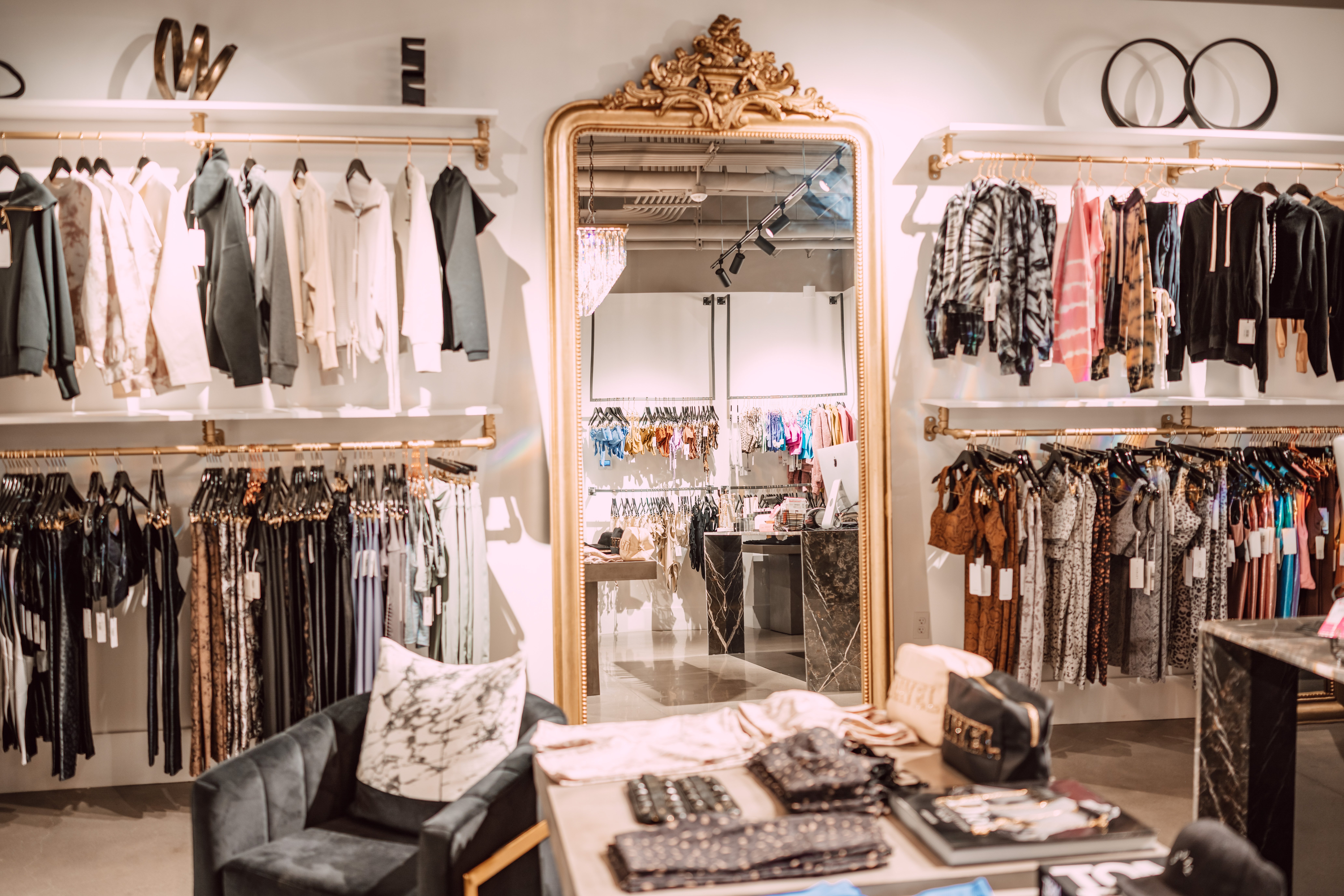Unveiling the Secrets Behind Budget-friendly Boutique Fashion
Unveiling the Secrets Behind Budget-friendly Boutique Fashion
Blog Article
Checking Out the Development and Impact of Clothes on Modern Fashion Trends
The evolution of apparel has substantially influenced modern fashion fads, merging historical criteria with cutting-edge developments. Renowned numbers like Coco Chanel and Yves Saint Laurent transformed the fashion business by presenting concepts that prioritize comfort and accessibility, which proceed to resonate today. Technological strides in locations such as 3D printing and smart textiles are redefining design possibilities and customer experiences (boutique fashion). Additionally, the expanding emphasis on inclusivity and sustainability is improving industry requirements. As we take into consideration these multifaceted impacts, one need to doubt just how these aspects jointly redefine fashion's function in showing and forming modern society.
Historical Fashion Influencers
In the tapestry of fashion background, particular figures have actually left an indelible mark, shaping the fads and designs that specify whole eras. Coco Chanel, a revolutionary designer, redefined ladies's style by presenting comfortable, sophisticated clothing that left from limiting corsets.
Elsa Schiaparelli is another pivotal figure, renowned for her progressive styles that integrated surrealist art, collaborating with Salvador Dalí to create whimsical pieces that challenged standard looks. Her cutting-edge use of shade and bold patterns reverberates in modern fashion. Yves Saint Laurent, at the same time, equalized high fashion with prêt-à-porter collections, bringing path styles to the masses and establishing a criterion for modern-day ready-to-wear lines.
These enthusiasts, to name a few, not just reinvented fashion in their times yet also set enduring patterns that resonate in today's fashion business, providing a foundation upon which contemporary developers remain to innovate and construct. Their traditions highlight the importance of creativity and bold in style's ever-evolving narrative.
Technical Advancements in vogue
In the middle of the vibrant landscape of the apparel industry, technical innovations stand at the center of development, reshaping how developers create and consumers involve with fashion. The combination of 3D printing has actually transformed style processes, making it possible for designers to trying out complicated structures and lasting products that were formerly unthinkable. This innovation assists in rapid prototyping, reducing waste and quickening manufacturing times.

Smart fabrics, installing technology right into fabrics, are likewise transforming the industry. Developments like temperature-regulating and self-cleaning materials offer enhanced functionality and comfort. Wearable technology, including attributes like fitness tracking and interaction, adds a new measurement to style, combining aesthetics with usefulness.
Social Shifts and Design
As technical advancements remain to reshape the garment industry, cultural changes are just as significant, redefining design and consumer preferences. Over the last few years, the rise of social media sites platforms has actually accelerated the circulation of global fashion fads, enabling varied social influences to converge and exist side-by-side. This digital interconnectivity has assisted in the quick exchange of ideas, bring about a more comprehensive and diverse interpretation of style that mirrors the complex nature of modern-day society.
Social recognition and gratitude have prompted developers to draw ideas from a wider range of historic and ethnic contexts, incorporating standard themes with modern aesthetics. This fusion has actually caused style that reverberates with a wider target market, advertising a sense of identity and belonging throughout various demographics. Additionally, the boosting need for personalization has actually driven brands to provide personalized alternatives, allowing consumers to share originality while reflecting their cultural heritage.
Furthermore, moving societal worths have actually influenced fashion, with inclusivity and diversity becoming central motifs. The market has actually started to accept versions and influencers of various type of body, ethnic backgrounds, and sex identities, difficult standard beauty standards. This transformation emphasizes the power of cultural changes fit the future of fashion, as style becomes a more genuine expression of cumulative and individual identity.
Sustainability and Modern Style
While the style market proceeds to advance, the critical for sustainability has ended up being increasingly urgent, influencing modern-day design practices. The surge of slow-moving fashion, which emphasizes high quality over quantity, encourages consumers to invest in timeless pieces instead than short-term trends.
Furthermore, modern-day style is characterized by its technology in reducing waste and promoting circularity. Methods such as zero-waste pattern cutting and 3D knitting are getting traction, enabling developers to create garments with marginal textile waste. Furthermore, brands are taking on clear supply chains, making sure accountability and cultivating consumer trust. This approach not just alleviates environmental influence however also boosts the social duty of fashion residences.

Future Trends in vogue

Sustainability will continue to be a driving force in shaping future fashion fads. The industry is increasingly embracing environment-friendly products and honest production techniques, reacting to a growing consumer need for responsible practices. Find Out More Advancements such as bio-fabricated materials and closed-loop recycling systems are readied to redefine exactly how apparel is generated and consumed, minimizing environmental effect while preserving style and top quality.
Social changes, consisting of the increase of inclusivity and diversity, will certainly also play a critical role. As society becomes much more knowledgeable about social problems, style is expected to come hop over to here to be a platform for expression and change. Developers will likely concentrate on developing collections that show a wider series of identifications and experiences, championing depiction and ease of access.
Conclusion
The advancement of apparel dramatically influences modern-day style trends, where historical influences combine with modern layouts. This continuous evolution emphasizes fashion's duty as a mirror to social worths and technological advancement, suggesting a future rich with innovation and inclusivity.
The advancement of clothes has significantly affected modern-day fashion fads, merging historical precedents with innovative developments.Among the dynamic landscape of the style industry, technological improvements stand at the leading edge of advancement, improving just how designers create and consumers involve with style.While the fashion sector proceeds to evolve, the vital for sustainability has become increasingly urgent, influencing modern-day design check this site out methods. As sustainability becomes ingrained in contemporary style, it paves the means for a much more responsible and mindful style sector.
The development of clothing considerably affects modern-day fashion fads, where historical influences combine with modern styles.
Report this page